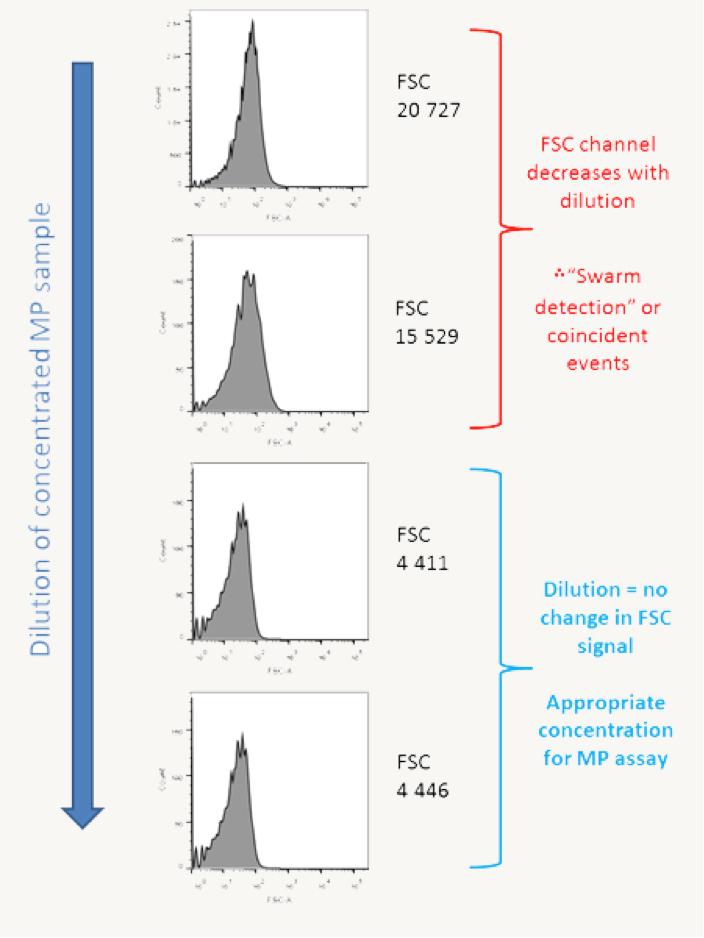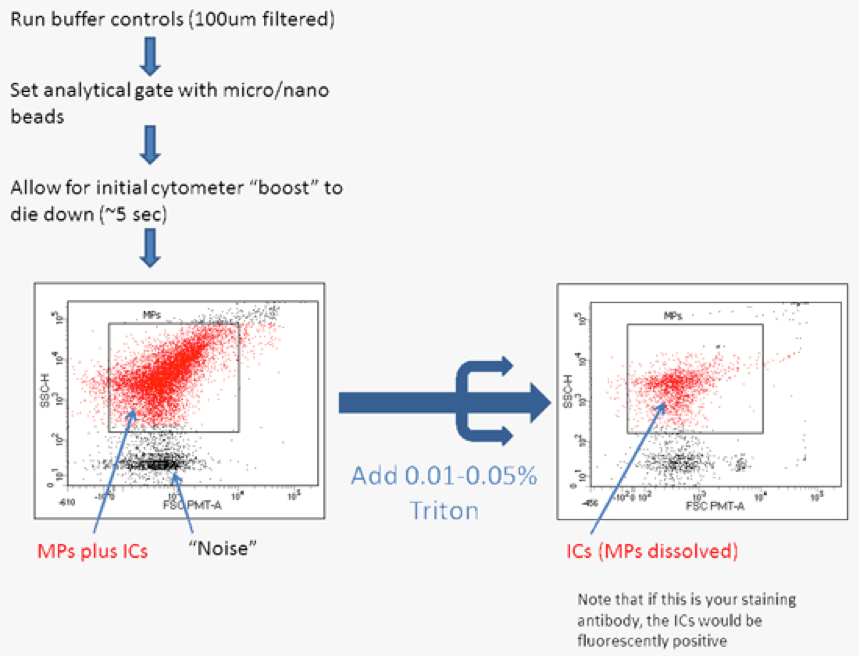Microparticles (MPs) are a type of extracellular vesicle (EV) distinct from exosomes (which are smaller and generated inside vesicular bodies prior to secretion through the open cannicular system) and apoptotic bodies (larger fragments of late-stage apoptotic cells carrying fragmented DNA and protein). MPs are extremely small vesicles generated via off-budding from a parent cell. As such they have a plasma membrane bilayer and biological molecule endowment derived from a parent cell. MPs were previously thought to be artifacts and disregarded as “cellular dust”. More recent investigation has clearly established a role for MPs as biomarkers of disease as well as active biological mediators or pathology/physiological homeostasis in most disease states.
Almost all cell types have been found to generate EVs in response to various biological stimuli. Microparticles/Microvessicles (~100-1000nm) are one of the more commonly studied populations and are typically induced following activation or inflammatory stimuli from many cell types including platelets, macrophages/monocytes, T-cells, B-cells, progenitor cells (EPCs, MSCs, etc.), cancer cells, endothelial and epithelial cells among many others.
These MVs/MPs are often characterized on the basis of cell surface antigens derived from the host cells (i.e. CD3 for T-cell MPs, etc) and carry a complement of surface proteins, enzymes, signaling proteins, second messengers and RNA species known to regulate the function of host/target cells. In particular, it is believed that MVs/MPs often are enriched for proteins and biological molecules that are concentrated in lipid rafts. Due to their small size, MVs/MPs are hard to assess by traditional imaging approaches and are often investigated through the use of flow cytometry and other techniques. Exosomes are the smallest currently analyzed EVs (>100nm) which are pre-formed vesicles stored in multi-vessicular compartments and secreted from the cell. Exosomes are often assayed based on number and size distribution (i.e via use of a Nanosight), characterized by the presence of stably integrated Tetraspanin proteins (i.e. CD63, CD9, etc).

Flow cytometry is an excellent but challenging method to assess MPs, with the advantage of high-throughput analysis, the power to quantitate several surface antigens (often of low expression level due to small particle size), and the ability to identify MP population subsets that may be of low frequency (i.e. circulating endothelial MPs). The difficulty is that the small particle size begins to stretch the limit of conventional cytometers and even the limits of newer high-sensitivity flow cytometers. As a result, FSC and SSC signals, appropriate gating, controls to exclude salt crystals, immune complexes and background from reagents becomes increasingly important and protocols for interrogating MPs are not easily taken off the shelf and applied to every project or every cytometer for that matter. MPs have a bad habit of making it through the cytometer more than one at a time and there is no pan-specific MP marker (Annexin V is NOT a marker for all MPs by any means).
Consequently there are several important steps that are best established in conjunction with the RCF staff in order to come up with the most appropriate (and accurate) protocol for your project. In general this includes:


A brief general protocol is available (Facilities-Protocol1-MP-analysis) but it must be stressed that this is general and not applicable to any and all MP experiments. It is best discussed and developed with lab staff or your RCF specialist.